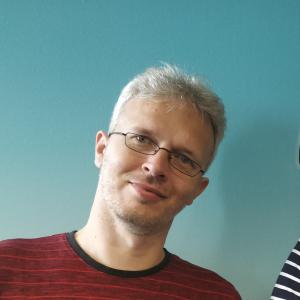Translated from Estonian
Continuing the "Mechanism of Addiction" experiment, we focused on one specific form of addiction – alcohol addiction – its cause, structure, components, and solution.
Family constellation is a psychological method where people take on the roles of psychological elements and begin to intuitively sense information that is otherwise inaccessible. Using this method, we explored the mechanism of alcohol addiction – one of the most powerful addictions represented in many family lineages.
Throughout the text below, we use the phrase "returning the emotion (etc.) to its owner" in several places. This means that often we take on emotions and other patterns that belong to others, without noticing or being aware of it. When their original owner becomes apparent, it is very easy for the carrier to "return" them to the one they belong to. This way, the carrier is freed from a foreign burden.
An Unexpected Pattern
"Was his grandfather killed?"
When clients talk about alcohol addiction in their family circle, I sometimes ask this question. The reaction is often the same: silent amazement and then: "How did you know?" or: "No, but his great-grandfather died in Siberia."
This is not a coincidence. This is a pattern I've seen in many families. Alcohol addiction doesn't start with the first drink – it starts with pain that has been passed down through the family lineage. Often, around 3 generations are involved. In many families, someone was lost in World War II or in Siberia. [Note: This refers to Soviet deportations to Siberian labor camps and WWII casualties, common traumas in Estonian family histories.] Typically, these were men who died in war. Their loss left behind not only grief, but a whole series of emotional burdens that subsequent generations inherited. Alcohol is a tool – like emotional morphine – that helps temporarily silence this great amount of pain.
Setting Up the Constellation
Based on this pattern, we set up a constellation to see how this mechanism works exactly and how it can be healed.
Below, I use the term "person" to denote the addict, i.e., the client.
At the beginning of the constellation, different participants took on the following parts:
- Person
- Alcohol
- Ancestor
- Pain
Alcohol
Alcohol was neutral and did not give us useful information.
The Experience of Pain
In constellations, people carrying roles often experience intense emotions that are characteristic of the given role. Therefore, we carefully observe each role's reactions, emotions, and feelings.
Pain immediately sat down, as if all strength had disappeared from within. She was also heavily burdened and hunched over. Saw no hope. Everything stood still. From her position, we understood that this was a child. She expressed burdens that were not her own:
- Loneliness
- Abandonment
- Sadness
These belonged to the ancestor. We asked the person to leave these emotions with the ancestor.
Then pain collapsed on her side. From the position, we understood that this was someone's death. We placed the ancestor's spouse, who had been murdered, next to the ancestor.
Healing the Position of the Murdered One
Communication with the murdered one was the primary step:
- "You are important"
- "You have your place among us"
- "You belong with us"
These needed to be said several times for his position to be healed.
We also added the killer and death. We acknowledged the killer's existence, because otherwise, disturbances related to searching for the killer may arise in the family lineage. We also agreed on the fact of the death-event, so the person wouldn't identify with this trauma.
Now, pain could sit up again, as the death theme had been resolved.
Hidden Shame
Pain began to hide herself. She hid her face behind her long hair. It was clear that shame was an issue here. At first, everyone denied it, but when we started working with it, it had an unexpected and very strong effect.
The appearance of shame is not random. It is a phenomenon that often accompanies addiction. In society, addiction is considered shameful and bad, and family members as well as the person themselves easily adopt this attitude.
We did not specify the details of shame, but stayed with the general.
There were two different shames hidden here:
- Family shame – we asked the person to leave the family shame with its owners. Family shame was the most intense.
- The person's personal shame – we helped them free themselves from it.
Restoring Proper Roles
Next, it emerged that the family order had gotten mixed up – children had become greater than parents. Pain said she had too great a burden. We added the grandparents' child – the person's parent. In this difficult situation, they had to give up their childhood and act for both parents: for the murdered one, because he wasn't there, and for the partner left behind, whom this situation had severely affected.
Their child felt bigger than them. We asked the person to return responsibility for their parents to their parents, and that they pass it on to whom it belongs. The parent finally got to become the grandparents' child and move toward them and start receiving love from them.
This was a great healing feeling. They said: "I got my parents back!" Even the constellation facilitator's eyes welled up with tears – because they were like a child who had grown up without parents, suddenly feeling parental love. We let them be there for a while. Being in love had a very healing effect.
But we still had one problem – the person was now greater than their parent. For this, we had to ask the person to return their parental responsibility to their parent. Now the parent became an adult and realized they had a child. The person could now finally start experiencing being a child and healing from the parents' absence.
Transformation
With each intervention (with healing sentences), the pain felt lighter. She stood up. Finally, it became clear that the pain had resolved and no longer needed attention. She left.
We asked the person what it was that was restored in them – belonging and connection with the family.
Key Steps
The critical steps in this work were:
- Restoring the murdered one's position – acknowledgment and healing
- Acknowledging death – accepting the event
- Acknowledging the killer – to avoid the emergence of searching or anger
- Returning emotions – returning their strong emotions (including pain) to all those closely connected with the murdered one
- Dealing with shame – returning it to the family and removing the personal
- Restoring proper family hierarchy – returning parental responsibility burdens and restoring the correct ancestral hierarchy
In Conclusion
This story showed a generalized scenario. Each real story has its own differences. For example, it's not the grandfather who was murdered, but the great-grandfather, or father. Perhaps there were multiple killers, or perhaps it was the Soviet power. Perhaps in this story, there is also someone's guilt that this happened, in addition to shame. Perhaps the experience of loss also belongs to the murdered one's parents, siblings, and other children. These details always emerge during the specific work.
The constellation revealed a clear psychological mechanism of alcohol addiction and showed the typical steps and elements for working with it.
This knowledge provides a new perspective. If you notice alcohol addiction in yourself – for example, a glass of wine in the evenings – you can ask yourself: "What pain am I carrying?" and "Who does it belong to?" I have seen cases where these two questions alone are enough to bring about change.
This knowledge does not replace professional help, but can provide the first step toward understanding – the question is not about willpower. You are carrying a story that is not your own.
The experiment was conducted by Ragnar Kurm.
---
Note: This article describes one constellation experiment for exploring the mechanism of alcohol addiction. It does not replace medical consultation or treatment, but offers an additional perspective. If you notice these patterns in yourself or your loved ones, it is a good idea to contact a certified professional family constellation facilitator or other experienced therapists who know how to work with inherited family patterns.

